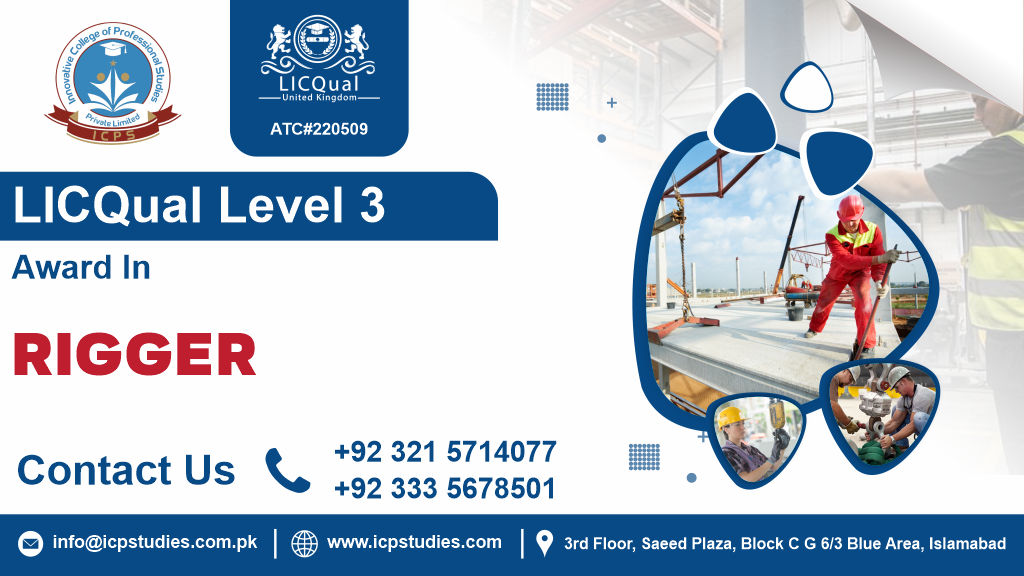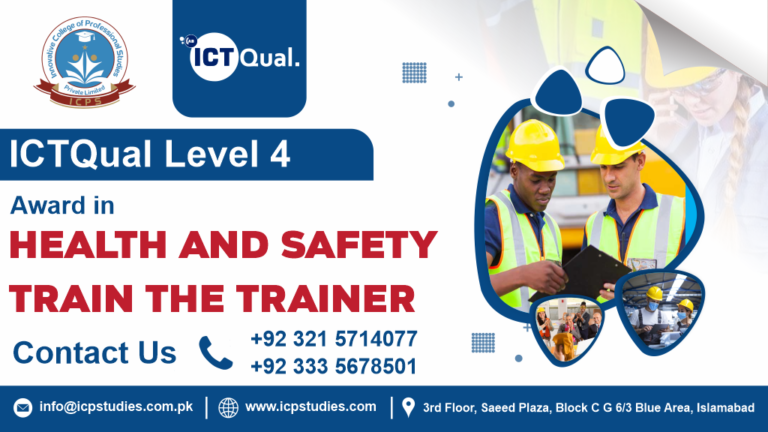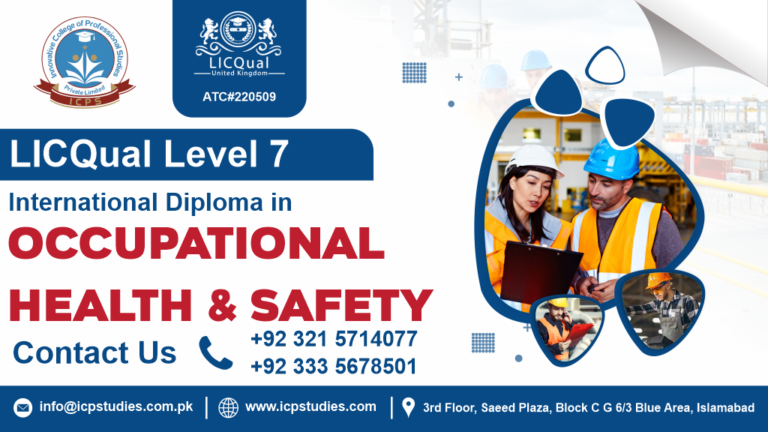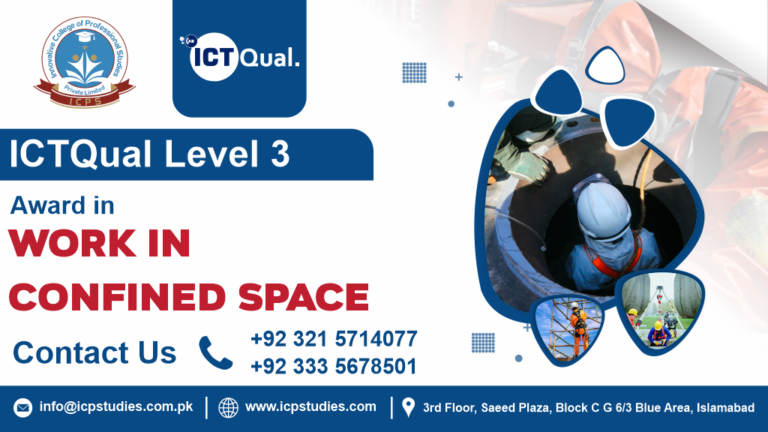In the dynamic world of construction, entertainment, and heavy industries, the role of riggers is indispensable. Responsible for the safe and efficient assembly, installation, and dismantling of complex structures, riggers play a crucial role in ensuring project success and personnel safety. The Level 3 Award in Rigger stands as a beacon for individuals aspiring to excel in this demanding yet rewarding profession.
The Level 3 Award in Rigger is a professional certification program designed to equip individuals with the knowledge, skills, and competencies required to perform rigging tasks effectively and safely. From understanding load dynamics to mastering rigging techniques, participants undergo comprehensive training aimed at preparing them for the rigors of the industry.
Level 3 Award in Rigger stands as a cornerstone in the realm of rigging, offering individuals the opportunity to elevate their skills and distinguish themselves in a competitive industry landscape. Through its comprehensive curriculum, practical applications, and focus on safety and excellence, this certification empowers riggers to thrive in diverse environments and contribute to the success of every project they undertake. As industries continue to evolve and demand skilled professionals, the Level 3 Award in Rigger remains a beacon of excellence for those seeking to make their mark in the world of rigging.
All About Level 3 Award in Rigger
Course Overview
The Level 3 Award in Rigger is a professional certification program designed to provide individuals with the necessary knowledge, skills, and competencies to perform rigging tasks safely and effectively. Rigging involves the assembly, installation, and dismantling of complex structures, equipment, and machinery in various industries such as construction, entertainment, and heavy manufacturing. The certification is typically targeted at individuals who work as riggers or aspire to enter the rigging profession.
The Level 3 Award in Rigger is typically awarded upon successful completion of a training program or assessment that covers these key areas. This certification serves as a testament to an individual’s competence and proficiency in rigging and may enhance career prospects within the rigging profession. Additionally, it contributes to organizational safety, efficiency, and compliance efforts, ensuring that rigging tasks are performed with the highest standards of professionalism and safety.
Study Units
Admission Criteria
- Introduction to Fire Incident Investigation:
- Understand the fundamental principles and procedures of fire incident investigation.
- Identify the key components of fire incidents and their causes.
- Learn techniques for gathering evidence and conducting thorough investigations into fire incidents.
- Develop skills in documenting findings and reporting on fire incidents accurately.
- Introduction to Rigging:
- Gain an understanding of the scope and importance of rigging in various industries.
- Identify different types of rigging tasks and their applications.
- Learn about the basic principles and terminology of rigging.
- Rigging Equipment and Selection:
- Familiarize with different types of rigging equipment, including slings, shackles, hoists, and lifting devices.
- Understand the characteristics, capabilities, and limitations of various rigging equipment.
- Learn how to select the appropriate rigging equipment for specific lifting tasks based on load requirements, environmental factors, and safety considerations.
- Rigging Techniques:
- Master a variety of rigging techniques used in lifting and moving loads, such as lifting, hoisting, lowering, and securing.
- Learn proper rigging procedures for different types of loads, including balanced and unbalanced loads, irregularly shaped objects, and fragile or sensitive materials.
- Develop proficiency in rigging techniques through hands-on practice and practical exercises.
- Rigging Safety and Regulations:
- Understand the importance of safety in rigging operations and its impact on personnel and property.
- Identify common hazards and risks associated with rigging activities and their potential consequences.
- Learn about safety regulations, standards, and industry best practices governing rigging operations.
- Develop skills in conducting risk assessments, implementing control measures, and promoting a culture of safety in rigging work environments.
- Practical Rigging Exercises:
- Apply theoretical knowledge and practical skills acquired in previous study units to real-world rigging scenarios.
- Participate in hands-on rigging exercises to simulate various lifting tasks and situations.
- Demonstrate competency in rigging techniques, equipment selection, safety procedures, and compliance with regulations through practical assessments.
By completing these study units and achieving the associated learning outcomes, participants in the Level 3 Award in Rigger program will be equipped with the knowledge, skills, and confidence to perform rigging tasks safely and effectively in a variety of industrial settings.
Ideal Candidat
- Educational Qualifications:
- Candidates may be required to have a minimum level of education, such as a high school diploma or equivalent qualification. Some institutions may specify additional educational prerequisites related to fields such as engineering, construction, or occupational health and safety.
- Work Experience:
- Many programs may require candidates to have relevant work experience in industries related to rigging, such as construction, entertainment, manufacturing, or logistics. The required duration of work experience may vary but is often a few years.
- Health and Fitness:
- Due to the physical demands of rigging work, candidates may need to meet certain health and fitness requirements to ensure they can safely participate in practical training activities. This may include passing a medical examination or fitness assessment.
- Language Proficiency:
- Proficiency in the language of instruction (usually English) may be required to successfully engage with course materials, participate in discussions, and complete assessments.
- Legal Requirements:
- Candidates may need to meet legal requirements specific to their region or country, such as minimum age restrictions or eligibility to work in certain industries.
- Prerequisite Courses:
- Some institutions may require candidates to complete prerequisite courses related to rigging, occupational health and safety, or construction safety before enrolling in the Level 3 Award in Rigger program.
- Additional Requirements:
- Depending on the program’s focus and content, candidates may need to demonstrate proficiency in areas such as mathematics, technical drawing, or computer skills.
It’s essential for prospective candidates to carefully review the specific entry requirements outlined by the institution or training provider offering the Level 3 Award in Rigger course. Meeting these requirements ensures that candidates have the necessary background knowledge, skills, and experience to successfully engage with the course material and achieve their learning objectives.
Learning Outcomes
- Aspiring Rigging Professionals: Individuals who are interested in pursuing a career in rigging within industries such as construction, entertainment, manufacturing, or logistics.
- Current Rigging Workers: Workers already employed in rigging roles who seek to enhance their knowledge, skills, and competencies to improve their performance and advance their careers.
- Construction Workers: Individuals working in construction-related trades, such as carpentry, scaffolding, or welding, who wish to expand their skill set to include rigging tasks.
- Entertainment Industry Professionals: Individuals working in the entertainment industry, including theater, live events, and film production, who are involved in rigging and stage construction.
- Manufacturing Workers: Employees in manufacturing facilities where rigging is necessary for material handling, machinery installation, or plant maintenance.
- Health and Safety Professionals: Occupational health and safety practitioners who want to deepen their understanding of rigging safety practices and regulations to better advise and support their organizations.
- Supervisors and Managers: Team leaders, supervisors, or managers responsible for overseeing rigging operations and ensuring compliance with safety standards and regulations.
- Career Changers: Individuals looking to transition into a new career field or industry where rigging skills are in demand.
- Anyone Interested in Rigging Safety: Individuals who have a general interest in occupational safety and want to learn about rigging safety practices, regulations, and risk management.
Overall, the Level 3 Award in Rigger is suitable for a wide range of individuals who want to acquire the knowledge, skills, and certification necessary to perform rigging tasks safely and effectively in various industrial settings.
FAQs about Level 3 Award in Rigger







